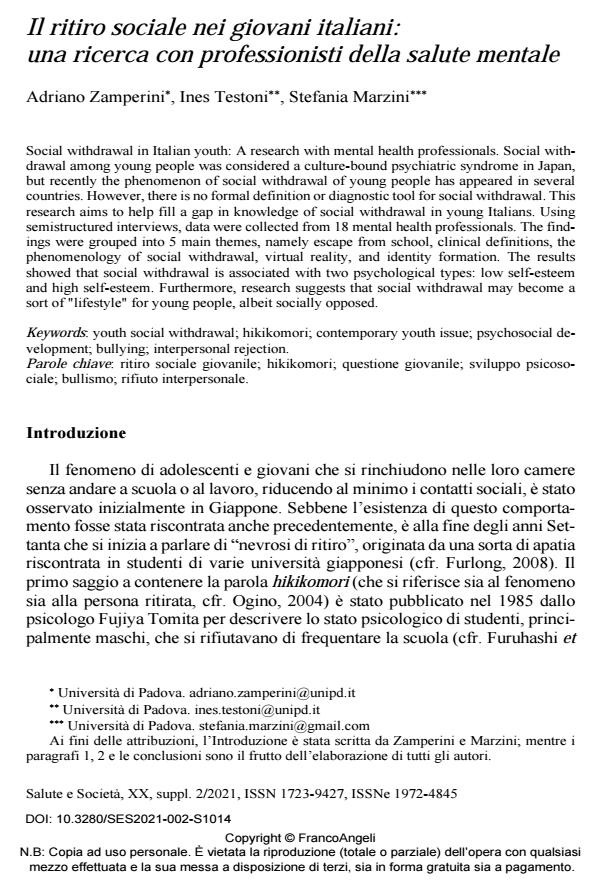Il ritiro sociale nei giovani italiani: una ricerca con professionisti della salute mentale
Journal title SALUTE E SOCIETÀ
Author/s Adriano Zamperini, Ines Testoni, Stefania Marzini
Publishing Year 2021 Issue 2021/suppl. 2
Language Italian Pages 16 P. 219-234 File size 233 KB
DOI 10.3280/SES2021-002-S1014
DOI is like a bar code for intellectual property: to have more infomation
click here
Below, you can see the article first page
If you want to buy this article in PDF format, you can do it, following the instructions to buy download credits

FrancoAngeli is member of Publishers International Linking Association, Inc (PILA), a not-for-profit association which run the CrossRef service enabling links to and from online scholarly content.
Social withdrawal in Italian youth: A research with mental health professionals. Social withdrawal among young people was considered a culture-bound psychiatric syndrome in Japan, but recently the phenomenon of social withdrawal of young people has appeared in several countries. However, there is no formal definition or diagnostic tool for social withdrawal. This research aims to help fill a gap in knowledge of social withdrawal in young Italians. Using semistructured interviews, data were collected from 18 mental health professionals. The findings were grouped into 5 main themes, namely escape from school, clinical definitions, the phenomenology of social withdrawal, virtual reality, and identity formation. The results showed that social withdrawal is associated with two psychological types: low self-esteem and high self-esteem. Furthermore, research suggests that social withdrawal may become a sort of "lifestyle" for young people, albeit socially opposed.
Keywords: ritiro sociale giovanile; hikikomori; questione giovanile; sviluppo psicosociale; bullismo; rifiuto interpersonale.
Adriano Zamperini, Ines Testoni, Stefania Marzini, Il ritiro sociale nei giovani italiani: una ricerca con professionisti della salute mentale in "SALUTE E SOCIETÀ" suppl. 2/2021, pp 219-234, DOI: 10.3280/SES2021-002-S1014